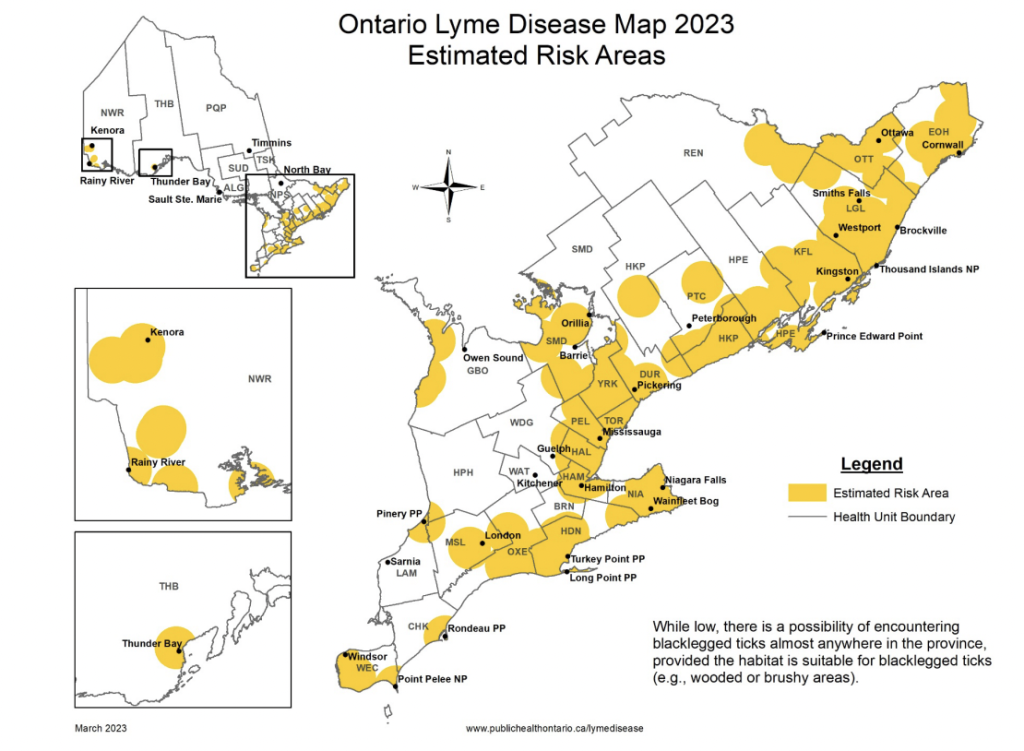Ontario doctors now watching three new tick-borne illnesses

Posted July 3, 2023 5:30 pm.
Last Updated July 3, 2023 5:33 pm.
Ontario doctors are now watching for three new tick-borne illnesses, in addition to Lyme disease.
Tick-borne infections are expected to rise across the province, and as of this weekend, a new regulation requires healthcare providers to report the three types of tick-borne diseases in addition to Lyme disease to their local medical officers of health.
“The infections include something called anaplasmosis, babesiosis and Powassan virus, these are three very, very rare infections in Canada,” said Dr. Isaac Bogoch.
“Those three infections, although extraordinarily rare right now, might not be so rare in the years to come.”
Climate change is to blame for their spread, according to the province’s medical officer of health.
As of this weekend, a new regulation requires Ontario heath-care providers to report three types of tick-borne disease in addition to Lyme to the province: anaplasmosis, babesiosis and Powassan virus. Cases are expected to rise due to climate change @CityNewsTO pic.twitter.com/3KZfKaAxM6
— Michelle Mackey (@michellemackey) July 3, 2023
Dr. Kieran Moore says, “It is simply from the ability of these ticks that are now able to survive our winters and stay and breed over their two-year lifecycle.”
Moore adds that a known wave of infections has been migrating up the coastline of northeast North America.
There is no specific treatment for Powassan virus according to the Centers for Disease Control, but anaplasmosis and babesiosis can be treated with antibiotics for symptomatic cases where patients may experience fever, muscle aches and pains, and headaches.
“It does have the potential to cause a very significant infection causing brain inflammation,” says Bogoch.
“Powassan virus is interesting, in fact, it gets its name from the town of Powassan Ontario.”
The virus was first identified in Powassan, following the death of a young boy from the disease.
Most infections of Powassan virus are asymptomatic, but people might have fever, headache, nausea, vomiting, weakness, or aches and pains. But after an acute phase and a period of remission, an infected person may experience confusion, loss of co-ordination, difficulty speaking, paralysis, seizures or coma.
Anaplasmosis is caused by bacteria that gets into a person’s bloodstream through a tick bite. It causes fever and chills, but can also suppress bone marrow and the creation of white and red blood cells, as well as platelets.
Babesiosis, on the other hand, presents similarly to malaria. Ticks transmit intracellular parasites, which get inside a person’s red blood cells and burst them, so people can present with anemia, along with having fever and chills.
The province says instances of additional infections will be tracked and added to the risk map to inform residents of Ontario when they become more prevalent, similar to the province’s current Lyme disease map.
“This shouldn’t stop us from enjoying the beauty of Canadian summers, I hope people go outside and enjoy, it is just simple things like, do a tick check when you come back inside, and use insect repellant as well,” said Bogoch.
Experts say Lyme disease remains the most prevalent tick transmitted illness across the country, with at least 2,100 reported cases last year according to Health Canada.
With files from the Canadian Press.








